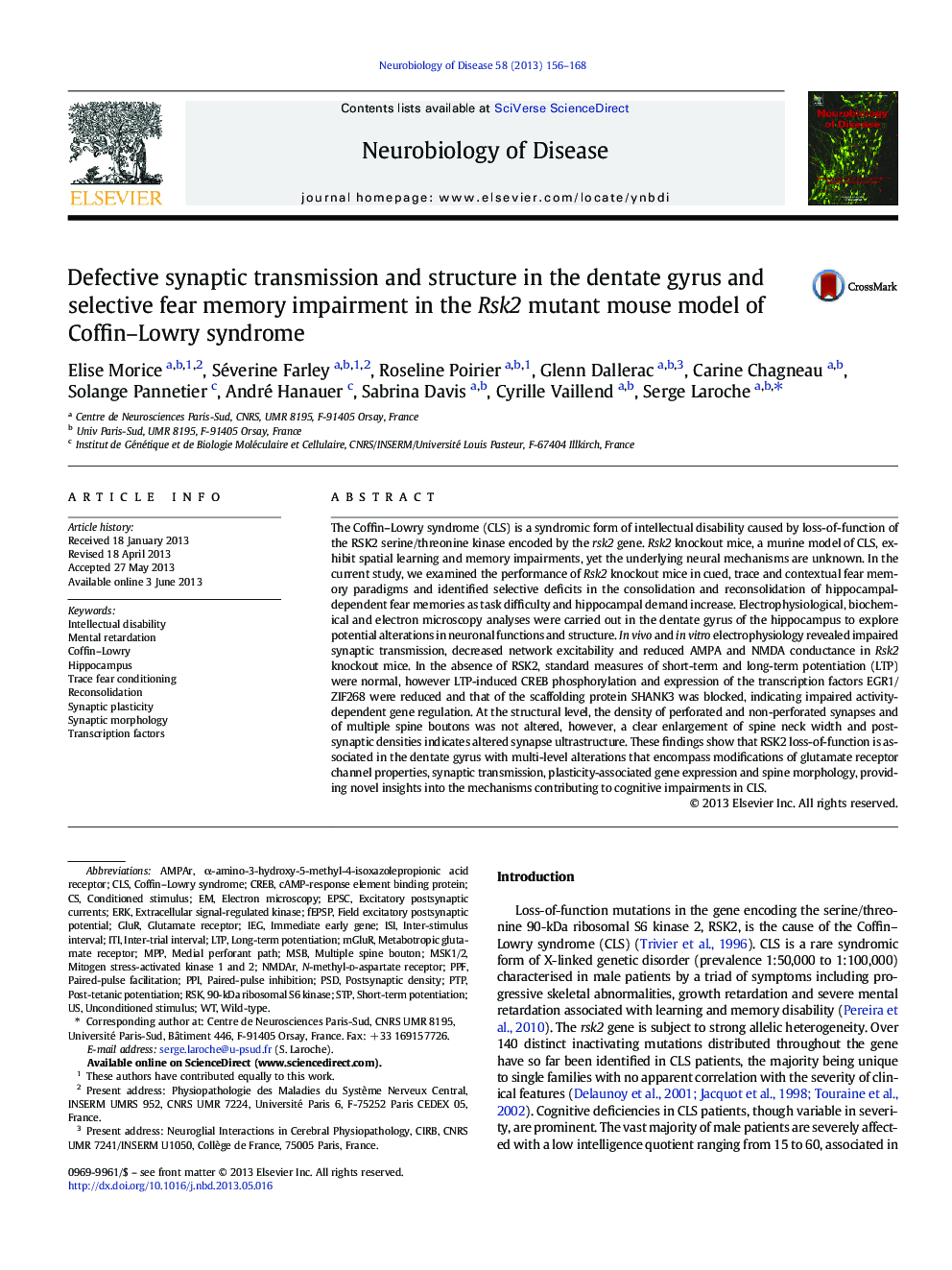| Article ID | Journal | Published Year | Pages | File Type |
|---|---|---|---|---|
| 6022226 | Neurobiology of Disease | 2013 | 13 Pages |
Abstract
The Coffin-Lowry syndrome (CLS) is a syndromic form of intellectual disability caused by loss-of-function of the RSK2 serine/threonine kinase encoded by the rsk2 gene. Rsk2 knockout mice, a murine model of CLS, exhibit spatial learning and memory impairments, yet the underlying neural mechanisms are unknown. In the current study, we examined the performance of Rsk2 knockout mice in cued, trace and contextual fear memory paradigms and identified selective deficits in the consolidation and reconsolidation of hippocampal-dependent fear memories as task difficulty and hippocampal demand increase. Electrophysiological, biochemical and electron microscopy analyses were carried out in the dentate gyrus of the hippocampus to explore potential alterations in neuronal functions and structure. In vivo and in vitro electrophysiology revealed impaired synaptic transmission, decreased network excitability and reduced AMPA and NMDA conductance in Rsk2 knockout mice. In the absence of RSK2, standard measures of short-term and long-term potentiation (LTP) were normal, however LTP-induced CREB phosphorylation and expression of the transcription factors EGR1/ZIF268 were reduced and that of the scaffolding protein SHANK3 was blocked, indicating impaired activity-dependent gene regulation. At the structural level, the density of perforated and non-perforated synapses and of multiple spine boutons was not altered, however, a clear enlargement of spine neck width and post-synaptic densities indicates altered synapse ultrastructure. These findings show that RSK2 loss-of-function is associated in the dentate gyrus with multi-level alterations that encompass modifications of glutamate receptor channel properties, synaptic transmission, plasticity-associated gene expression and spine morphology, providing novel insights into the mechanisms contributing to cognitive impairments in CLS.
Keywords
MPPCLSIEGmGluRGluRNMDARfEPSPMSBITIRSKMedial perforant pathCoffin–Lowry syndromeAMPARPTPPPFCREBPSDPPIMSK1/2ERKEPSCSTPα-amino-3-hydroxy-5-methyl-4-isoxazolepropionic acid receptorISIReconsolidationpostsynaptic densitypaired-pulse facilitationlong-term potentiationLTPexcitatory postsynaptic currentstrace fear conditioningTranscription factorsinter-trial intervalinter-stimulus intervalunconditioned stimulusconditioned stimulusPaired-pulse inhibitionSynaptic morphologyElectron microscopyintellectual disabilitywild-typeHippocampusPost-tetanic potentiationField excitatory postsynaptic potentialShort-term potentiationcAMP-response element binding proteinSynaptic plasticityimmediate early geneMental retardationextracellular signal-regulated kinaseN-methyl-d-aspartate receptorMetabotropic glutamate receptorGlutamate receptor
Related Topics
Life Sciences
Neuroscience
Neurology
Authors
Elise Morice, Séverine Farley, Roseline Poirier, Glenn Dallerac, Carine Chagneau, Solange Pannetier, André Hanauer, Sabrina Davis, Cyrille Vaillend, Serge Laroche,
